The Untold Story of Battle of Saraighat
The History of India is very vast and it requires huge effort to know the entire history of India. Prior to modern history, it comprises many kings and kingdoms which ruled during a different period of time. Most of the Indians are unaware of the great Ahom Kingdom that ruled the eastern part of India. When the Indian mainland was struggling to fight against the tyrant Mughal Rule, the Ahom Kingdom was already flourishing in the eastern part of India. The Ahom Kingdom was one of the longest continuously surviving kingdom in world history and it was ruled by Hindu rulers. The kings of the Ahom dynasty successfully resisted Mughal expansion in Northeast India and maintained their sovereignty for nearly 600 years (1228–1826).
In this article, we are not going to discuss the Great Ahom Kingdom of India but about one of the greatest Military fights that took place in the year 1671 and the role of one of the commanders of the Ahom Army. His name was Lachit Borphukan and he was commander and a Borphukan in the Ahom Army and is known for his leadership in the famous Battle of Saraighat. It was due to the military skill and tactics of Lachit Borphukan that Mughal advancement in the northeast part of India was halted. The Mughals faced a crushing defeat in the battle of Saraighat and never tried to attack the eastern part of India again. The Battle of Saraighat is very crucial in the History of India as the outcome of battle allowed the eastern part of India to preserve its temples, culture, traditions and overall its Identity. In this article, we would be covering the entire story of the Battle of Saraighat, Strength, and weakness before and after the Battle of Saraighat and the importance of Battle of Saraighat in the History of India.
Qucik Navigate:
The Ahom Kingdom of Assam and their Conflict with Mughal Rule
The Ahom kingdom was situated in the Brahmaputra Valley in Assam and it successfully repulsed the Mughal Expansion in Northeast India. The Kingdom maintained its sovereignty for nearly 600 years (1228-1826). Mughal Dynasty started in 1526 and declined by the time Aurangzeb died (Mughal Rule in India 1526-1858). The area controlled by the Ahom dynasty was famous for its rich natural resources and availability of elephants and aromatic plants and it attracted the Mughals to conquer it. Between the year 1615 to 1682, there were 18 major conflicts between the Ahoms and Mughals. In these 65 years of conflict, only during 1637-1639, Mughals were able to conquer the whole of Assam and took control of Guwahati. Excluding this period Mughals were often defeated by the Ahoms and few of the defeats were devastating.
Situation Just before the Battle of Saraighat and Role of Lachit Borphukan
The Mughal war of succession started after the fall of the Mughal Emperor Shah Jahan in 1658. Taking advantage of the situation Jayadhwaj Singha, then the King of Ahom took Guwahati under their control. After Aurangzeb occupied the Delhi throne he ordered Mir Jumla II to reclaim the territory. In 1661, Mir Jumla marched towards the eastern province of India and defeated the Ahoms at successive encounters and took control of Ahom capital Garhgaon. Atan Burhagohain (Prime Minister of Assam) started guerrilla warfare and succeeded in cutting off Mughal communication and made it difficult for Mir Jumla to establish the Mughal rule. King Jayadhwaj Singha was unaware of the progress made by his army and he sued for peace. Finally, the Treaty of Ghilajharighat was signed in the year 1663 but the terms of the treaty were so humiliating for the Ahom Kingdom that they started preparing to take the revenge of humiliation inflicted on them. Few terms of the treaty were:
- Jayadhwaj Singha has to send his Six-year daughter to the Imperial Harem.
- A payment of 20, 000 tolas of gold and 300,000 tolas of silver.
- 40 Elephants at once and 90 within a period of 12 months.
King Jayadhwaj Singha died in despair and he was succeeded by Chakradhwaj Singha who elected a new commander – Lachit Borphukan. Lachit Borphukan together with Atan Burhagohain started rebuilding the Ahom army as well as the morale of Ahom people. Food and military productions were increased and the construction of new forts was commissioned. The structure of the Army was also reorganized with new weapons and better training. New boats were constructed which were not big but large enough to carry sufficient Ammunitions and sail swiftly in the huge flow of Mighty Brahmaputra River.
The Battle of Saraighat and Role of Lachit Borphukan
Ahom Army under the command of Lachit Borphukan reclaimed the control of Bahbari, Kajali, Sonapur, Panikhaiti, and Titamara forts. The Ahom Army then captured the Rangamahal fort but an extended battle took place to take control of the fort of Itakhuli. To take control of Guwahati it was necessary for Lachit to take control of Itakhuli fort. After the siege of nearly one month, the Ahom army was unable to penetrate the fort and Mughal reinforcement was coming from Bengal. To counter this situation Lachit ordered Bagh Harazika (Ismail Siddiqui) to take a few of his best soldiers and scaled the walls of the fort by ladders. Once the Ahom Soldiers entered the fort they filled the mouth of cannons with water next day Lachit launched a final attack on the fort and reclaimed it.
Ahom Army had edge over Mughal Army led by Ram Singh as they had a greater number of soldiers and cavalierly. Lachit knew this fact and therefore he always fought with gruella warfare tactics. The Ahom King Chakradwajha Singha ordered a full-scale frontal attack on Mughal Army for which the Ahom army was not ready. As a result, in the battle of Alaboi the Ahom Army was severely defeated and nearly 10,000 soldiers of the Ahom Army were killed. Lachit was also critically injured but he was able to save his life. After defeating the Ahom Army, King Ram Singh started the diplomatic negotiations whose terms were to keep the boundary between the Ahom Kingdom and Mughal as it was in the year 1639. The Ahom General Atan Burhagohain rejected this proposal stating there was no guarantee that Aurangzeb will agree to the terms placed by King Ram Singh who was one of the vassals of Aurangzeb. With the negotiations failed it was clear that now a final battle is the only option.
Battle of Saraighat, Illness of Lachit Borphukan and His Role in the Battle
After all the negotiations failed to reach any terms and battle was inevitable, Mughal Army under King Ram Singh started preparations for their final assault on Ahom Army and started moving North-Bank of Bhramaputra River towards Guwahati. The Mughal Army has 40 large boats and they were capable of holding sixteen cannons each and many small boats along with a large amount of ammunition. Mughal admiral Munawar Khan and the Mughal Viceroy Shaista Khan also joined the forces of Ram Singh whereas the Ahom force was in a demoralized state after their defeat in the previous battle. Their best commander Lachit Borphukan was ill and recovering. During the initial phase of the battle, Mughal forces advanced towards Guwahati and reached close to Andharubali. Lachit was watching the advancement of Mughal forces from his bed and decided to lead his army in spite of warnings given by the doctor and astrologers that he is not fit to participate in the war.
The Battle of Saraighat is only battle in the history of India that was fought entirely in the river i.e. Brahmaputra River. The Ahom army regained its spirit when they saw their commander Lachit Borphukan leading the war. Lachit shouted “The King has put all the people in my hands to fight the Bengal. Shall I go back to my wife and children?”. His words raised the morale of the Ahom army and they started fighting with their Bacchari Boats (War boats smaller in size). The center point of the war was at the sight of the famous Kamakhya Temple and Ahom army attacked from three sites i.e. Kamakhya Temple, Ashwaklanta Temple and Kharghuli Hills forming a triangle. Since the battle was fought entirely on the water the smaller boats of the Ahom army moved more swiftly than the larger boats of the Mughal Army. The Ahom army attacked the Mughal Army from all the three ends and formed a wall with boats making sure no more reinforcement could reach to the Mughal Army trapped at Kamakhya Temple. Mughal General Munawar Khan was killed by a gunshot and it created chaos in the Mughal Army. Three top generals of the Mughal Army were also killed and by the end of the day, the causalities of the Mughal Army were more than 4000 soldiers. The Mughal Army started retreating and when they reached Manas River Lachit ordered them not to attack the retreating army as they have secured their border and it was against the rule to attack a retreating army. Finally, the years of rigorous training and practice paid off and Guwahati was under the control of the Ahom Kingdom. If the Ahom Dynasty was able to save their capital it was because of the role played by Lachit Borphukan during the Battle of Saraighat. Lachit Borphukan died a year later due to illness.
Importance of Battle of Saraighat in the History of India and North-East India
The impact of the Battle of Saraighat is huge in the history of India and particularly in the History of North-East of India. It resulted in many positive socio-economic developments in the region. Many development work and restoration of temples were done by later Kings of the Ahom Dynasty. Had they lost the Battle of Saraighat, Mughal Army would have brought havoc in the area like killing of people and destroying the temples situated in the region. The north-eastern states of India were able to preserve their culture and identity due to the great role played by commanders like Lachit Borphukan, Atan Burhagohain, and Bagh Harazika. It is unfortunate for us that we do not know the role played by Lachit and other commanders. The name of Lachit Borphukan is famous in Assam but outside Assam people hardly know about him. The same is about the battle of Saraighat. Most of the Indians know about the Battle of Panipat, Battle of Haldighati, Battle of Plassey but they don’t know about the Battle of Saraighat. I was once reading a statement somewhere, “people of India know more about the United States of America than they know about North-Eastern India”. The statement seems true when I find people who even can’t tell the capitals of all the seven north-eastern states of India. We should make efforts to know about the rich and great history of the north-eastern states of India. I also read in many blogs who defined this battle as Hindu vs. Muslim but it is to be noted here that this was not a war of religion. The Battle of Saraighat was similar to any other battle fought in those days but the impact of battle was huge on the history of North-East India. Mughal Army was commanded by King Ram Singh who was a Hindu ruler and many Muslim Soldiers and commanders like Bagh Harazika (Ismail Siddiqui) participated from the side of the Ahom army. Important for us is to remember the heroes who fought bravely in the battle and spread their heroism to the rest of the people of India.

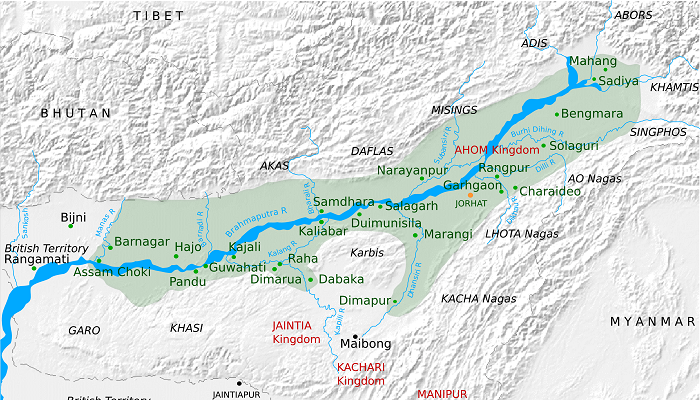
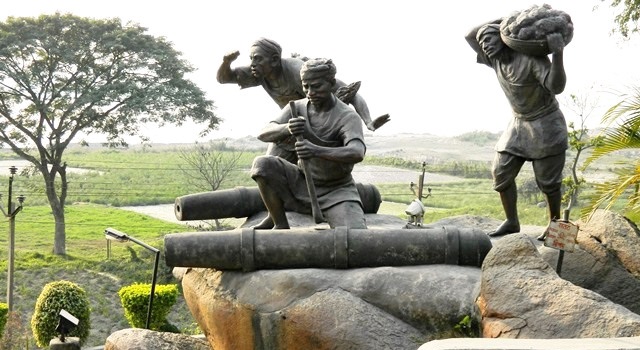
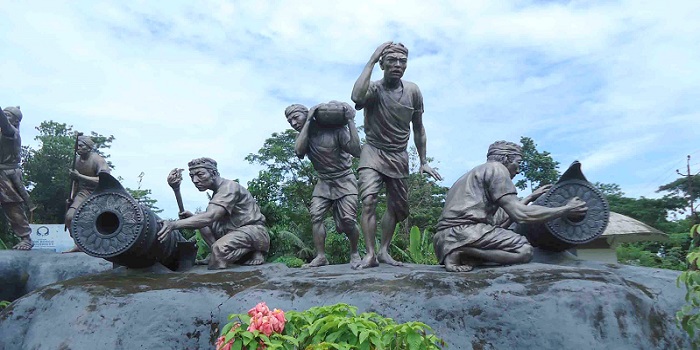
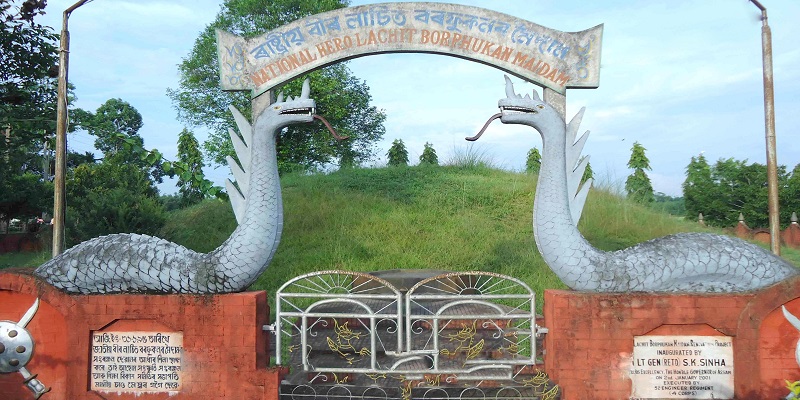

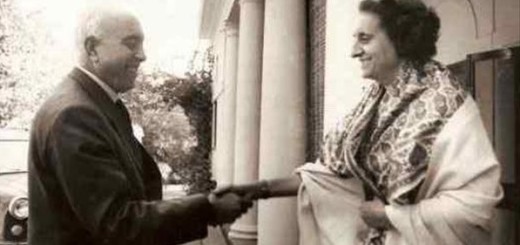


Great Information! Thanks for the article!